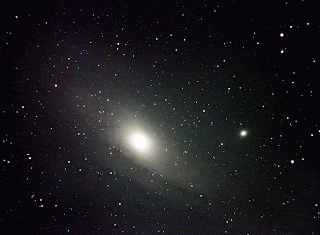I'm still learning about the DS16C--but what I know, I really like. The cam combines high sensitivity with very low noise and no amp glow. With this cam, you can capture detail fast!
My goal here is not to spend hours producing an image, but to see how good an image can be with fast capture and minimal processing. Below is an image of M31 captured with the DS16C and f/4 Newt. It is a stack of 3x10-second integration with some level adjustment in Photoshop to darken the background--less than 5 minutes of total work.
The trials, tribulations and small triumphs of a Charlotte, NC astronomer imaging under Bortle 8/9 skies.
Monday, October 24, 2016
Subscribe to:
Post Comments (Atom)
SH 2-132 The Lion Nebula. 10 Hours with the Seestar S50
Sh 2-132, the Lion Nebula is a great target at this time of year. This image has a total of 10 hours of integration time x 20s subs in EQ mo...

-
I had a couple of emails asking how to defork an ETX telescope. The ETX 90 and ETX 125 were optically superb scopes, but the mounts left a...
-
The ZEQ25 doing its stuff on a cold night--imaging the Orion Nebula with an 8 inch f/4 astrograph. Note the lovely Christmas rug :) As ...
-
One of the great things about being a part of an online community of people with similar interests is that you learn a lot from people who a...




No comments:
Post a Comment